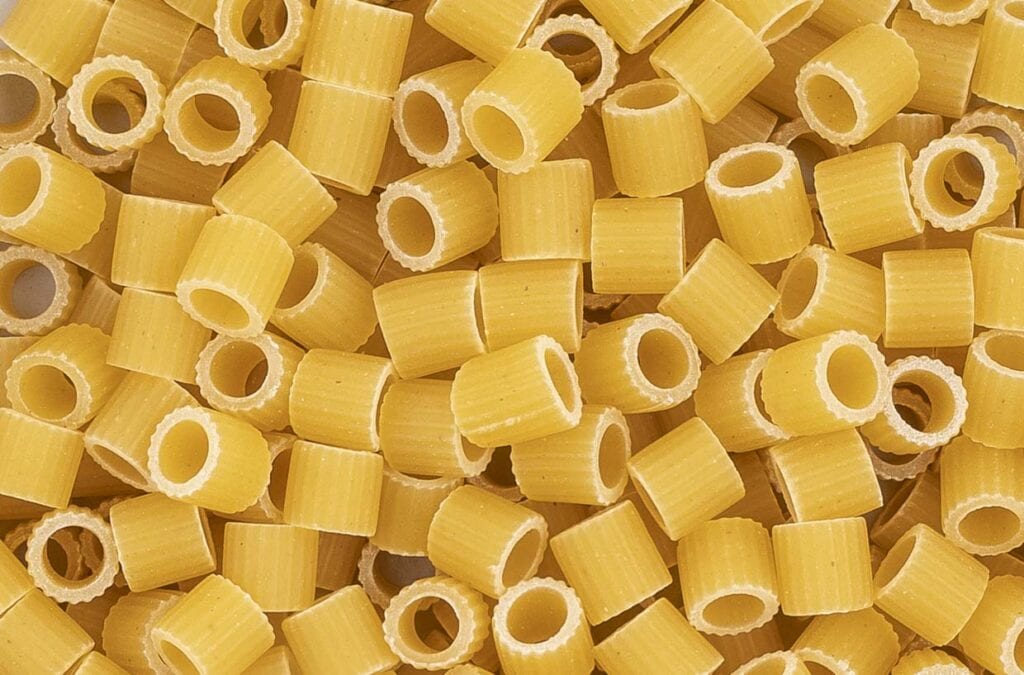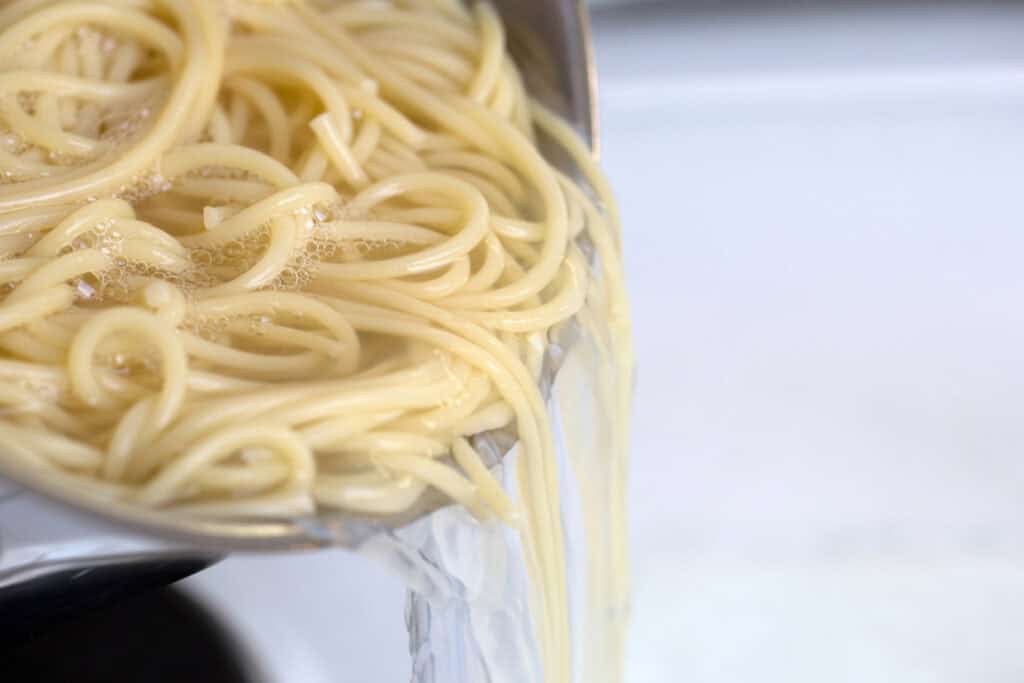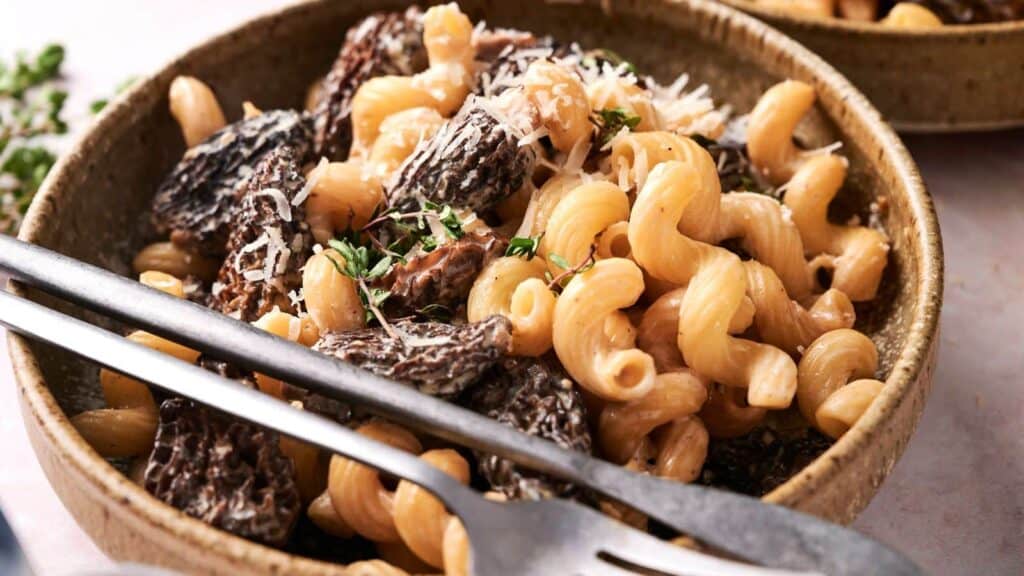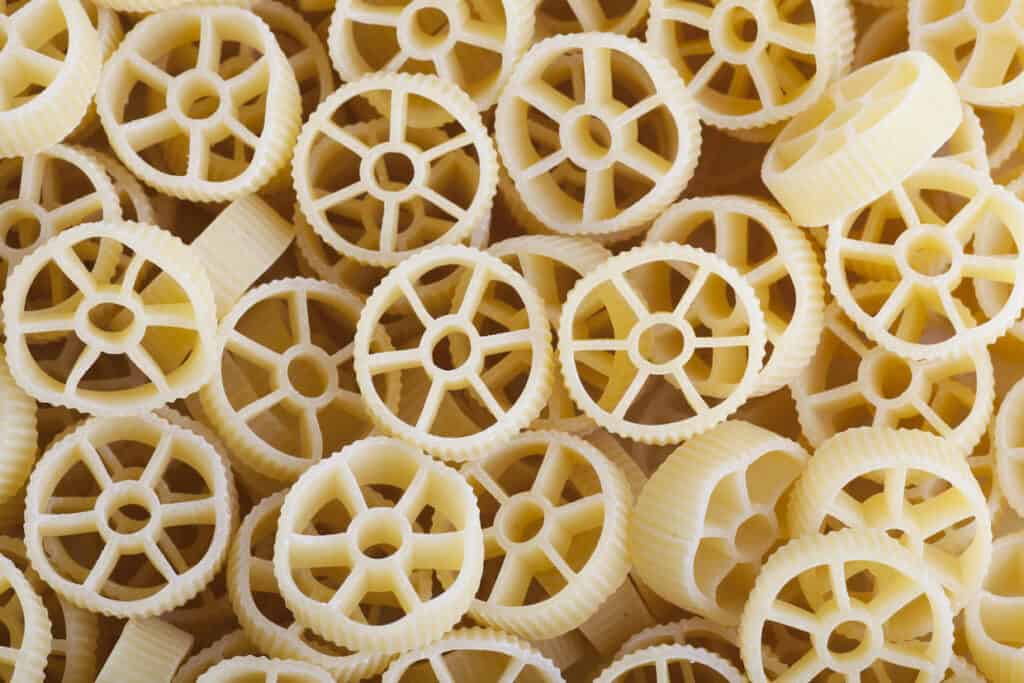Perfect pasta isn’t about fancy sauces or secret family recipes, it’s about nailing the basics of water, salt and timing. Miss even one of these, and you’re left with a sad, soggy mess instead of the perfect al dente bite. Get these three elements right, and every bowl becomes a masterclass in simplicity.

The role of water
When it comes to cooking pasta, the first rule is simple — don’t skimp on the water. Using a large pot filled with plenty of water ensures that the pasta has room to move around and cook evenly. Crowding it in a small pot can lead to sticky, unevenly cooked noodles. The general guideline is about 4-6 quarts of water per pound of pasta. This may seem excessive, but it makes a world of difference in achieving the right texture.
The temperature matters, too. Bella Bucchiotti from xoxoBella says her Nonna’s best tip was to “only add pasta to a roiling boil to help it cook evenly and prevent it from getting mushy.” Boiling water quickly seals the pasta’s surface, helping it maintain its shape and preventing it from becoming mushy. If you add pasta to water that isn’t fully boiling, you’re more likely to end up with a gummy, overcooked mess.
One common mistake is starting with cold water and letting the pasta heat up like you would with potatoes. While this might seem like a time-saver, it throws off the cooking process and leads to inconsistent results.

Why salt matters
Adding salt to the water is non-negotiable if you want pasta that actually has some taste to it. This step isn’t about flavoring the water, it ensures that the pasta absorbs the salt as it cooks. Think of it as your only chance to season the noodles from the inside out. While salting is always important, its effect is even more pronounced in a dish like pumpkin stuffed shells where the surface area of the pasta is much larger than the filling and sauce.
A good rule of thumb is about 1 ½ tablespoons of salt per 4-6 quarts of water. Yes, it sounds like a lot, but remember, most of it stays in the pot.
There’s some science at play here, too. Salting the water slightly raises its boiling point, which helps the pasta cook more evenly. But the real magic is in how the salt gets into the pasta, subtly enhancing its flavor without needing to drown it in sauce later. It’s a simple step that makes a big difference in the finished dish. Without salt, your pasta will taste bland no matter how rich your sauce is, so don’t be shy with this step and salt generously.
The importance of timing
Timing is everything when it comes to the perfect pasta. The goal is al dente which translates as firm to the bite. That ideal texture isn’t just about mouthfeel, it’s also about how the pasta holds up in the sauce.
Most pasta packages give a cooking time range, but they shouldn’t be taken as gospel. Start checking your pasta a minute or two before the lowest time listed. That way, you can catch it at just the right point, rather than realizing it’s overcooked after it’s too late.
Cooking time varies depending on the shape and thickness of the pasta, but one universal rule remains — never walk away from the pot. If it’s slightly underdone, you can finish cooking it in the sauce, which lets the flavors meld beautifully. But if it’s overcooked, there’s no turning back; you’re stuck with mushy noodles that no amount of sauce can save.

Bringing it all together
Perfect pasta doesn’t end with just draining it, the finishing touches can make or break the dish. One key step is to reserve a cup of starchy cooking water before you drain the pot. This cloudy, salty liquid is pure gold when it comes to adjusting the consistency of your sauce. It helps thicken the sauce, making it stick to the pasta instead of just pooling at the bottom of the plate.
Another pro move is to finish cooking the pasta in the sauce. Rather than dumping fully cooked pasta into a cold sauce, let it simmer together for the last minute or two like in this sun-dried tomato pasta recipe. This allows the pasta to absorb the sauce, making every bite more flavorful. It also allows you to adjust the sauce’s texture by adding a splash of that reserved pasta water if needed.
Common pasta mistakes and how to avoid them
Even seasoned home cooks can make a few missteps when it comes to pasta. Here are the most common pitfalls and how to sidestep them:
- Rinsing the pasta: Resist the urge to rinse your pasta after cooking. Just drain it and toss it directly into your sauce. Kristin King from Dizzy, Buzzy and Hungry says she never rinses the pasta after cooking as it “washes away all that starchy goodness that helps the sauce cling to it perfectly.”
- Adding oil to the water: This is another myth that needs to be debunked. Adding oil doesn’t keep the pasta from sticking, it just makes it harder for the sauce to coat the noodles. If you’re worried about sticking, a quick stir after adding the pasta to boiling water does the trick.
- Breaking long pasta before cooking: Snapping spaghetti or linguine in half to fit it into the pot may seem practical, but it disrupts the texture and experience of eating long pasta. Instead, let the noodles soften for a moment, then gently push them into the water as they begin to bend.
- Not stirring enough: Failing to stir the pasta right after adding it to the pot can lead to clumping. A quick stir in the first minute or two ensures the noodles won’t stick together or to the bottom of the pot.
- Draining every drop of water: While it’s common to completely drain pasta, keeping a little bit of water in the pot helps with mixing and ensures the sauce coats the noodles evenly. This is especially true when finishing pasta in its sauce.

Pasta like a pro
Perfect pasta isn’t a mystery, it’s a matter of mastering a few essential steps. With the right amount of water, a generous hit of salt and spot-on timing, you can transform a basic pot of noodles into something exceptional. Remember to save that starchy cooking water, skip the oil and never rinse the pasta. These small adjustments make a big difference.
Gina Matsoukas is the writer, photographer and recipe creator of Running to the Kitchen. Focusing on healthy, seasonal, whole-food recipes, her work has been featured in various online and print publications including Food Network, Prevention Magazine and Women’s Health. Gina lives in central New York, where she enjoys an active outdoor life.